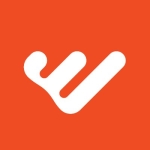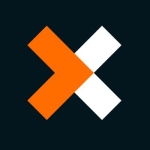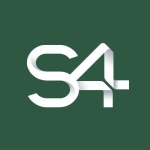What is our primary use case?
In our case, all use cases are relevant to the telecom industry. In the telecom industry, we are the service providers for various telecoms such as Vodafone, AT&T, et cetera. We are the service providers. We are doing some processes and we are doing support in the networks as well. In terms of the internet, when it comes to supporting the network, there are some processes that need to be completed manually. Therefore, we will take those processes from all the verticals. For example, we did this project for Telus, and we identified the processes to where we can implement automation. We sought out processes that were good areas for automation adoption.
We identify those areas for clients and map them out.
What is most valuable?
The solution's most valuable aspect is the fact that it is systematic. It's a very systematic tool. We can do all these things like array and cache. It's very useful.
We were able to create a few new processes which we automated.
The mapping is very good. On mapping, we can order the tools required for automation.
The analysis itself is very good. We're able to say which areas can be improved and which are the easiest areas to automate. Typically, it's good at revealing which decision-making areas could be automated effectively.
The tool is very technically sound.
The product is very secure.
What needs improvement?
The solution is not user-friendly. It has a very high learning curve. People should be able to learn it easily so that they will get interested in using it.
While the solution is more secure, it's very hard to find people trained on that. I need different people, not only those who are trained on RPA tools. I cannot get people in Blue Prism. Without the resources, people just move to Automation Anywhere or UiPath which are more user-friendly. In comparison, UiPath is much easier to use and you can find people who are well-versed in it.
The product needs to put out more videos, similar to Automation Anywhere, which does that a lot. You can find a lot of videos online in relation to Automation Anywhere and UiPath, however, this is not the case with Blue Prism. There's just less information available.
Blue Prism needs to provide better training. They need to start something similar to Automation Anywhere University or UiPath Academy. If they had some courses at different levels (basic, advanced, and master), there would be more educated personnel available.
The solution needs to provide a trial license - whether it is on cloud or on-premises. They need to provide a standard environment to work with. We need to have practice in installing the data center and connecting it to the database.
We need to understand how we can migrate from one lesser version to the higher version and what is the load balance and how we can manage that. We need to understand better how our core system is managing that. Proper training would help with understanding.
For how long have I used the solution?
I've been using the solution for about two years at this point.
What do I think about the stability of the solution?
The solution is quite stable. We haven't had any issues with it. It isn't buggy or glitchy. It doesn't crash or freeze.
Which solution did I use previously and why did I switch?
I'm strongly involved with Automation Anywhere. I've been working with Automation Anywhere since 2019.
While Blue Prism and Automation Anywhere are very similar to each other in terms of capabilities, Automation Anywhere is much easier to use.
Even in Blue Prism or UiPath or Automation Anywhere, the attributes are very similar to each other. However, Blue Prism is got a larger barrier to entry due to its high learning curve and lack of strong training.
We prefer the fact that, for example, on Automation Anywhere, we can use trial versions and we can use that time to train employees on how to use it. With Blue Prison, there doesn't seem to be a trial option.
How was the initial setup?
We are not very familiar with the Blue Prism installation or if it's easy or not. Those areas are a bit of a gray area for me as I'm not doing many installations.
The setup and installation we didn't do ourselves. We did these projects in the client end roadmap. The client has the Blue Prism tool. They set up everything themselves. Our job is to go there and to be able to provide the roadmap.
Likely, the installation takes about two or three hours, I would estimate.
The product has its own database, such as an SQL server. We often install supporting tools, however. There are some coming out now, such as Python, Java, and VBScript editors. Certain items, such as Java Runtime Focus should be installed. There are different installations depending on the client. If it is not on the cloud, the installations definitely take some time. It might take two hours or more.
What about the implementation team?
Our clients handle the initial setup themselves.
What's my experience with pricing, setup cost, and licensing?
Unlike other options, you need to buy a license. You cannot do a trial. At least, that was always the case a few years ago. With UiPath or Automation Anywhere, there are trial versions. It's a drawback for clients if it is still true that no trial option is on the table.
What other advice do I have?
I'm no longer using Blue Prism. I deal more with UiPath now. However, I am certified in Blue Prism. I tend to take care of the delivery part. We talk with the clients and understanding the clients' requirements, understand the project, then divide the project into activities and map them out. I will help to architect it. If there is any trouble in capturing those areas then I will analyze this in Blue Prism or Automation Anywhere.
So far, in those Blue Prism projects, it's very straightforward with rule-based - straightforward in the process automation. We will concentrate on low-hanging areas first and we will identify only those areas that we can automate easily. I'm sorry. In terms of automating end-to-end process, we will concentrate only on to 60% to 70% for our automation.
Premarajan:
So come back to the courses, in that way, we are not much familiar with the Blue Prism installation, how this installation takes time, it's easy or not. Those areas are a little gray area for me because I'm not doing much in the installation. But if you ask us if in the installation of Automation Anywhere, definitely, I can say I'll answer that. I can see that screen by screen. When we install it, the watch screen will come first like that. I can say that because I personally did installation Automation Anywhere installation.
Premarajan:
I set up a lab system in Tata so that our employees can train. I did a lot of things. Like that, I installed a UiPath as well in my system. I installed even [inaudible 00:26:08] also they provided, Microsoft has. They also provided a trial license to me when I asked. They also provided.
Premarajan:
But Blue Prism, those days, didn't provide me the trial version and they didn't help me, how to install it. No idea. That is a shortfall I can say about Blue Prism. [crosstalk 00:26:29]-
Emma:
So you were-
Premarajan:
It's very limited when we needed the license or those who purchased the Blue Prism people can work on Blue Prism tool. Others had no chance to learn. That I can say one way it's good. In the other way, people were not aware of the tool. That is, I can say it's good except for one drawback.
I'd rate the solution at a seven out of ten.
Which deployment model are you using for this solution?
On-premises
Disclosure: My company does not have a business relationship with this vendor other than being a customer.





















Is the price US$ 1,110 per year basis?